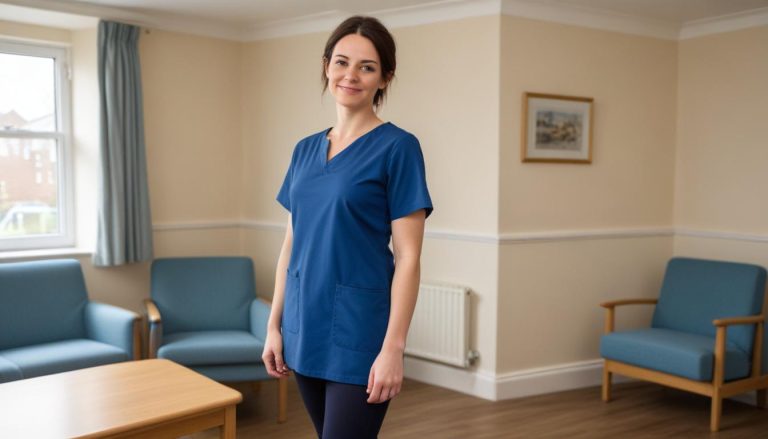This guide will help you answer 3.4 Analyse the range and types of evidence that can be used to demonstrate the service is meeting requirements.
Evidence is the information or records used to show that a care service meets regulations and standards. Regulators such as the Care Quality Commission (CQC) and local authorities ask for different types of evidence during inspections or reviews. Evidence can be written, visual, verbal, or digital. Each type helps to prove that the organisation keeps people safe, treats them well, follows the law, and supports rights.
In this guide, we will cover the different types of evidence you can use in your service.
Written and Documentary Evidence
Written evidence is the most common type. Regulators often ask to see documents during inspections or investigations.
Some key examples include:
- Policies and procedures: Up-to-date documents showing how the service runs and what staff must do.
- Care plans: Detailed records about each person’s needs, wishes and risks.
- Daily logs: Staff notes completed during each shift which describe care tasks, observations and incidents.
- Risk assessments: Written evaluations explaining how risks are managed for people, environments, or tasks.
- Staff training records: Proof that workers have completed mandatory and ongoing training.
- Safeguarding reports: Documents showing what happened, what action was taken, and the outcomes after any concerns.
- Supervision notes: Records of one-to-one meetings between staff and managers.
- Audit reports: Summaries from checks on medication, health and safety, infection control, or record keeping.
- Complaint logs: Information about any complaints, investigations, and outcomes.
- Incident forms: Written accounts of accidents, medication errors, or near-misses and how they were managed.
Strengths: Written evidence provides a detailed, lasting record. It is useful for proving what has been done and helps prevent misunderstandings.
Weaknesses: Written evidence alone may not show how well things are done in practice. If records are not up to date or are inaccurate, this can cause problems during inspections.
Visual Evidence
Visual evidence helps show how the service actually operates and provides a snapshot of day-to-day life.
Examples:
- Photos of the environment: Images of clean and safe communal areas, bathrooms, or bedrooms.
- Maintenance certificates: Evidence of regular checks and servicing for equipment or vehicles.
- Health and safety posters: Pictures of important information for staff and people who use the service.
- Charts: Posters or whiteboards displaying infection control processes, hand washing steps, or food hygiene guides (with permission).
Strengths: Visual evidence can often be easier for inspectors to review. It gives a direct sense of the real conditions in the service.
Weaknesses: Images only show a specific point in time and do not explain background details. Consent should be gained before taking or sharing images in care settings.
Qualitative Evidence
Qualitative means “descriptive” rather than “number-based.” This type of evidence demonstrates the impact of care on people’s lives.
Key examples:
- Feedback forms: Comments or surveys from people who use the service, families, and staff.
- Minutes from meetings: Notes showing people’s views, ideas and decisions are recorded and acted upon.
- Compliments: Letters, cards, or emails praising staff or the service.
- Supervision and appraisal outcomes: Written notes from meetings talking about staff’s experiences, achievements, and goals.
Strengths: Qualitative evidence links rules to real lives and can highlight what works well or what needs to change.
Weaknesses: This kind of evidence can be subjective, and opinions may differ. It works best when supported by other types of records.
Quantitative Evidence
Quantitative means “number- or data-based.” This evidence can show trends, patterns, and improvements.
Examples include:
- Audit results: Numbers of medication errors, falls, or incidents.
- Training completion rates: Percentages of staff up to date with required training.
- Staffing levels and rotas: Patterns in hours worked, absences, or agency use.
- Complaint statistics: The number of complaints received and resolved within target times.
- Accident records: How many accidents occurred over a set period and what action was taken.
Strengths: Quantitative evidence is clear, measurable, and easy to compare across time.
Weaknesses: By itself, this evidence may not explain why situations have improved or what caused a problem. Numbers can hide personal experiences.
Observational Evidence
Direct observation provides a real-time view of practice and culture in the service.
This can involve:
- Managers or external professionals shadowing staff and watching care being delivered.
- Spot checks or unannounced visits to different parts of the service.
- Inspectors observing staff interactions with people who use the service.
Strengths: Observation reveals the “real” culture and can spot gaps missed in paperwork.
Weaknesses: People sometimes change their behaviour when being watched (known as the “Hawthorne Effect”). Observations reflect a short slice of time rather than a complete picture.
Digital and Electronic Evidence
Digital systems are common in adult care, especially for record keeping and communication.
Examples:
- Electronic care plans and records: Secure digital platforms showing updates, actions, and reviews.
- Email chains: Evidence of information sharing, consent seeking, or liaison with health and care partners.
- Learning management system (LMS) logs: Proof of e-learning completed by staff.
- Maintenance and compliance software: Records of tasks, checks, and repairs done digitally.
Strengths: Digital evidence can be searched and shared quickly. It shows changes and updates in real time.
Weaknesses: Security breaches and user errors are risks. Staff need training on using systems and keeping data secure.
Testimonies and Statements
Verbal evidence is another way to show compliance, though it may not always stand alone.
This might include:
- Statements from people using the service, their family, or advocates, describing their experience.
- Staff interviews: Accounts of how tasks and responsibilities are managed.
- Expert opinion: Feedback from doctors, nurses, social workers or other professionals.
Strengths: Personal testimonies and professional statements bring policies and outcomes to life and support written records.
Weaknesses: Memories may be unreliable, or accounts may not match written records. Testimonies work best when recorded and reviewed alongside other evidence.
External Audit and Inspection Reports
Independent checks from outside organisations carry a lot of weight.
This may include:
- CQC inspection reports
- Reports from local authority monitoring visits
- Food hygiene inspection reports
- Fire safety and environmental health checks
Strengths: External reports give a third-party, impartial view of compliance or issues. They often provide practical recommendations.
Weaknesses: Inspections are not every day, so reports may not reflect recent improvements or concerns.
Using a Mixed Approach
No single type of evidence works in every situation. Combining different kinds of evidence often gives the clearest picture. For example:
- Written policies and staff training records can show a medication policy is in place.
- Observations prove staff follow it in real life.
- Feedback, audits and incident forms help show results and improvements.
By mixing qualitative and quantitative, written and visual, you can answer questions from regulators with confidence.
Presenting Evidence Effectively
Regulators look for more than just paperwork. They want to see how evidence proves good care, safety, and respect for rights. Here are some good habits for showing evidence:
- Keep records up to date and store them securely.
- Respect confidentiality (do not include names in public records).
- Use real examples and case studies to show impact.
- Show how you respond to incidents, complaints, or audits.
- Stay ready for spot checks by keeping evidence easy to find.
Final Thoughts
Showing that your service meets regulations relies on clear, varied evidence. Written records, observations, numbers, feedback, visual records and digital data all have value. The right mix proves you are providing safe, caring, effective, responsive and well-led care. Regularly reviewing and updating evidence helps you stay inspection ready, develop best practice, and demonstrate commitment to the people you support.
Subscribe to Newsletter
Get the latest news and updates from Care Learning and be first to know about our free courses when they launch.







